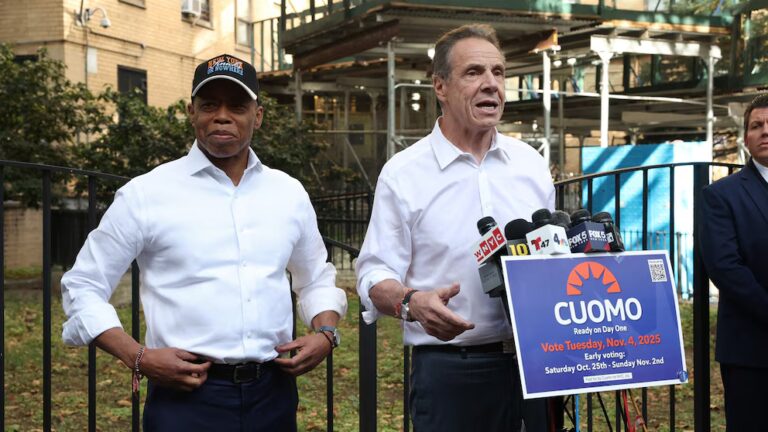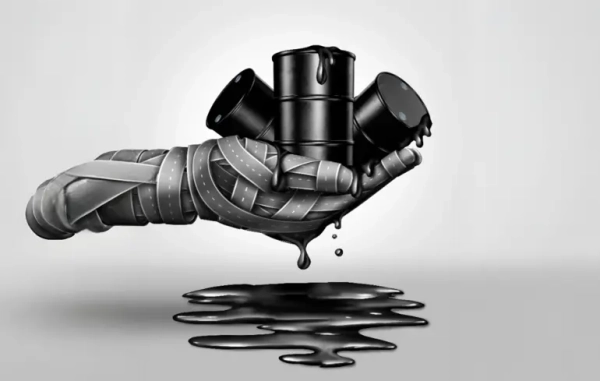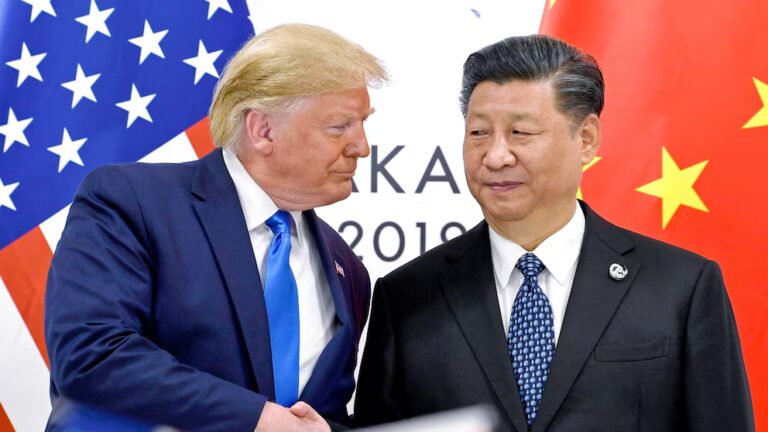“`html 
This piece initially ran in The Highlight, the exclusive magazine for Vox members. Sign up for Vox Membership today to gain advance access to exclusive content each month.
Across Western Europe and Japan, political parties and figures challenging the established order are gaining ground. In the US, the MAGA movement, helmed by President Donald Trump, has assumed control. Political violence is on the rise, and by various metrics—violent disturbances, anti-government rallies—the US is presently undergoing the highest degree of societal unrest and political struggle in a century. What is on the horizon? How do we guide our societies through these troubled times without descending into a cataclysmic civil conflict?
Our present situation isn’t unique. We can glean insights from how societies of the past weathered, and ultimately resolved, their periods of crisis.
The “wealth pump”
The downfall of ancient empires, the upheavals that shook early modern Europe, or the frictions dividing today’s democracies are often perceived as outcomes of specific historical situations. However, my examination of more than a hundred historical crises over the past two millennia reveals that these instances of societal instability are propelled by a mechanism functioning with remarkable consistency across distinct times and places: the wealth pump. The phrase denotes a collection of circumstances — economic and political — that shift assets from the broader population to the elite, a select few who accrue authority.
The wealth pump is made up of various methods through which the rewards of financial expansion, instead of being distributed fairly, are channeled upward within society. Historically, this occurred from farmers to landowners; currently, from workers to company proprietors and corporate executives. Initially, economic disparity increases. Then, political inequality follows suit, as the affluent transform their wealth into influence. This progression weakens democratic frameworks, making it more challenging for the non-elite majority to safeguard their interests through established political processes. Eventually, the very foundations of systemic stability are compromised.
Undermining society
The wealth pump jeopardizes societal stability in three distinct ways.
1) It generates growing public dissatisfaction.
The most noticeable outcome of the wealth pump is its role in enriching the upper tiers and expanding their ranks through upward economic advancement — for instance, enabling large corporation CEOs to join the ranks of the extremely wealthy. However, this occurs at the expense of the majority. To grasp this, consider the relative wage, defined as the compensation earned by typical workers (specifically, the median wage) in relation to the GDP per capita. When the relative wage decreases, workers outside the elite receive a progressively smaller share of the gains from economic growth. This decline in relative wages implies that, despite wage stagnation, expenses for housing, education, and healthcare skyrocket.
For instance, in the United States, the relative wage began its descent from the 1970s forward. Despite economic expansion, the majority of Americans lagged behind. This culminates in resentment and heightened potential for mass mobilization.
2) The wealth pump produces an excess of affluent elites — more than can be accommodated in high-level roles.
This becomes especially clear when we note that some of the wealthiest individuals are keen on converting their economic clout into political power (consider Trump, but also Michael Bloomberg, Steve Forbes, and others). The count of decamillionaires is now 10 times greater (and the count of billionaires has risen even more sharply), yet the number of political positions remains unchanged — one president, 100 senators, and so on.
3) The wealth pump drives an excessive number of young people to pursue not only college but also advanced degrees, hoping to avert looming “precariousness.”
Elevating the count of elite aspirants (resulting from the overproduction of both wealth-holders and degree-holders) vying for a limited number of power positions triggers a game akin to musical chairs. As the percentage of aspirants encountering frustration in their pursuit of powerful roles escalates, many become enticed to defy the established rules.
This combination generates an explosive situation: unchecked drive and collective action, paired with structure and inspiring leaders. We are thus presented with a contradictory alliance: alienated elites from above, and disgruntled masses from below. Historical revolutions — from the latter days of the Roman Republic to 18th-century France to the Russian Revolution — have often originated from this unstable concoction. It’s not merely the impoverished who rebel; revolutions are fostered among those facing downward mobility or being shut out of positions of power despite their elevated status and ambitions.
The long arc of instability
Of course, societies are complex systems, and numerous variables impact the road to governmental breakdown. And this dynamic—wealth concentration, elite overproduction, mass impoverishment—doesn’t lead to instantaneous collapse. Yet, there arises a point where the contradictions can no longer be contained. Eventually, something has to give.
We can observe this cycle across history. In ancient Rome, the wealth pump obliterated the class of autonomous citizen farmers, while the elite class proliferated with equestrians and senators contending for influence. The outcome was a century of internal conflicts culminating in the Republic’s end and the emergence of autocracy. The earliest populist faction (populares in Latin), was initiated by the Gracchi brothers, and its most prosperous (for a time) leader was Julius Caesar. The paths of Roman populists, who channeled the discontent of non-elite Romans, are strikingly parallel to those of modern populists, notably Trump.
During 17th-century England, decades of population growth, diminished wages, and a significant expansion in the numbers of the landed gentry resulted in civil war, regicide, and a radical restructuring of the political economy. In pre-revolutionary France, the aristocracy and clergy cemented their privileges while the rural and urban poor bore the burden of taxation—until the entire system imploded in 1789.
These were not isolated events. They are expressions of a recurring structural pattern. To resolve a crisis, a society must, first and foremost, halt the wealth pump.
What can we learn from history about ending crisis periods?
Once a society initiates a path toward crisis, it’s similar to a massive sphere racing down a narrow valley bordered by steep slopes. Halting or even deviating from its trajectory toward impending disaster is exceedingly difficult. However, when the sphere arrives at the crisis point—for instance, when counter-elites seize control—the valley broadens.
Historically, most exits from crisis involved a protracted period of decomposition and discord, spanning several decades, and sometimes surpassing a century. One example is the early modern crisis in France, originating in 1562 with the Wars of Religion and culminating with the beginning of Louis XIV’s personal reign in 1661. The subsequent period of disintegration in France, the Age of Revolutions, also stretched over many decades—from 1789 to 1870.
Most frequently, wealth pumps were deactivated by a significant epidemic, a devastating civil war, or a transformative revolution. “Death is the great leveler,” as historian Walter Scheidel noted in his self-titled publication. The Black Death in 14th-century Western Europe claimed the lives of half the population. The resultant contraction of the labor force drove up actual wages, reversing the wealth pump. This was followed by many decades of internal strife in France and England, in which overproduced elites decimated themselves, pushing large portions into the commoner class. In the ensuing cycle, termed the General Crisis of the 17th century, the Thirty Years’ War (1618–1648) extinguished more than one-third of the German populace, also resetting the structural conditions that subsequently concluded the crisis.
However, other avenues exist for emerging from crisis, and certain courses of action manage to circumvent revolution or civil war. Analysis by my research team indicates that, at the edge of the crisis, the state’s massive sphere can be guided to achieve superior outcomes. This observation holds significant relevance for us today—indeed, a substantial degree of unpredictability and historical contingency is cause for optimism. This suggests we collectively possess the capacity to truly shape the future.
We should brace ourselves for years, potentially even decades, of societal turbulence and political disputes (and I hope we can avoid violent civil conflict).
My colleagues and I examine several scenarios that successfully avoided revolution or civil conflict. In one article, we explore the Conflict of the Orders in ancient Rome, which pushed the Roman Republic to the precipice of civil conflict but was resolved when the patricians agreed to distribute power with the plebeians.
During the reform era in England (1838–1857), political overhauls eliminated “rotten boroughs,” consequently shifting the balance of power away from the landed gentry in favor of the commercially oriented elites who were gaining prominence. Further reforms broadened the electorate by expanding eligibility to vote. Another critical piece of legislation that alleviated impoverishment was the revocation of the Corn Laws, which had imposed tariffs on grain imports, benefiting large landowners but inflating the cost of essential food in domestic markets.
The Great Reforms within the Russian Empire (1861–1874) not only abolished serfdom but also eased censorship of the media and modernized the judicial framework. Additional reforms encompassed military modernization, local self-governance, education reforms, reform of the Russian Orthodox Church, and economic modernization.
The US was in a state of crisis prior to the New Deal (1933–1938). However, the New Deal implemented a wide range of redistributive measures: steeply progressive tax rates, reinforced labor rights, financial regulation, substantial investment in infrastructure and education, and the expansion of social safety nets. These reforms were not enacted instantly. They arose from hard-fought political battles (beginning in the early decades of the twentieth century), often propelled by mass movements and reform-minded segments of the elites who recognized that continued extraction risked systemic failure. Social Democratic movements in northern and western Europe, such as Denmark, proved even more adept at shutting off their wealth pumps during the same time frame.
Finding a way out
Regrettably, analysis of 150 past crises revealed that only about 10 to 15 percent averted significant bloodshed. However, the fact that successful crisis resolutions, rare in the distant past, have become more prevalent as we approach the present is cause for encouragement.
Our societies differ from Imperial Rome and even from our mid-20th-century predecessors. Yet, the underlying principles for a successful exit from crisis endure. While the specific policies will vary across societies, the overarching aim remains consistent: to restore equilibrium to the distribution of wealth and power in a way that fosters long-term stability rather than immediate elite enrichment.
One principle lies in stressing the importance of productive, rather than solely extractive, economic activity. In recent decades, financialization and monopolization have rerouted the economy’s focus away from industries generating real goods and services toward those simply reallocating ownership or extracting rents. To reverse this trend, we require tax and regulatory structures that incentivize innovation, job creation, and sustainable enterprise—while discouraging speculative asset bubbles, predatory lending practices, and corporate hoarding.
Progressive taxation is another foundation of any effort aimed at slowing the wealth pump. This may encompass not only elevated income tax rates for the highest earners but also wealth taxes, inheritance taxes, and the closure of loopholes enabling billionaires to pay lower effective tax rates than their employees.
Equally important is the restructuring of the labor market from the ground up. The decline of organized labor over several decades has diminished the bargaining leverage of the majority, resulting in wage stagnation. When workers are authorized to demand a just portion of economic gains, the upward flow of wealth decelerates—and society becomes more equitable and more resilient.
Another crucial area may be the regulation of political power itself. As wealth has accumulated, so has influence—often in ways that distort democracy. Campaign finance reform, restrictions on lobbying, anti-corruption measures, and heightened government transparency are all indispensable to ensure that public policy serves the broader citizenry rather than specific elite interests. A democracy governed by oligarchic donors is contradictory—and a catalyst for social disquiet.
Yet, policies alone are inadequate. The wealth pump is further sustained by narratives: the notion that excessive inequality is the price of advancement, that markets are always inherently wise, that poverty stems from moral failings rather than structural disadvantages. These cultural viewpoints must be challenged and replaced by a renewed emphasis on social unity and mutual responsibility. No society can flourish by abandoning the ideal of the common good.
The preceding reflections should not be regarded as a definitive reform agenda. Historically, various societies have employed diverse methods to conclude their periods of disintegration. Oftentimes, discovering a resolution demands many decades of experimentation and political struggle. The primary challenge lies in the ongoing profitability of the wealth pump for the majority of elites. Institutional inertia and vested interests will resist every step toward rebalancing. Hence, I wouldn’t anticipate swift action. Rather, we should prepare for years, perhaps even decades, of societal upheaval and political conflicts (and I express hope that we can avert a hot civil war). However, the longer we postpone controlling the wealth pump, the longer our own period of disintegration will persist.
“`
Source: vox.com






